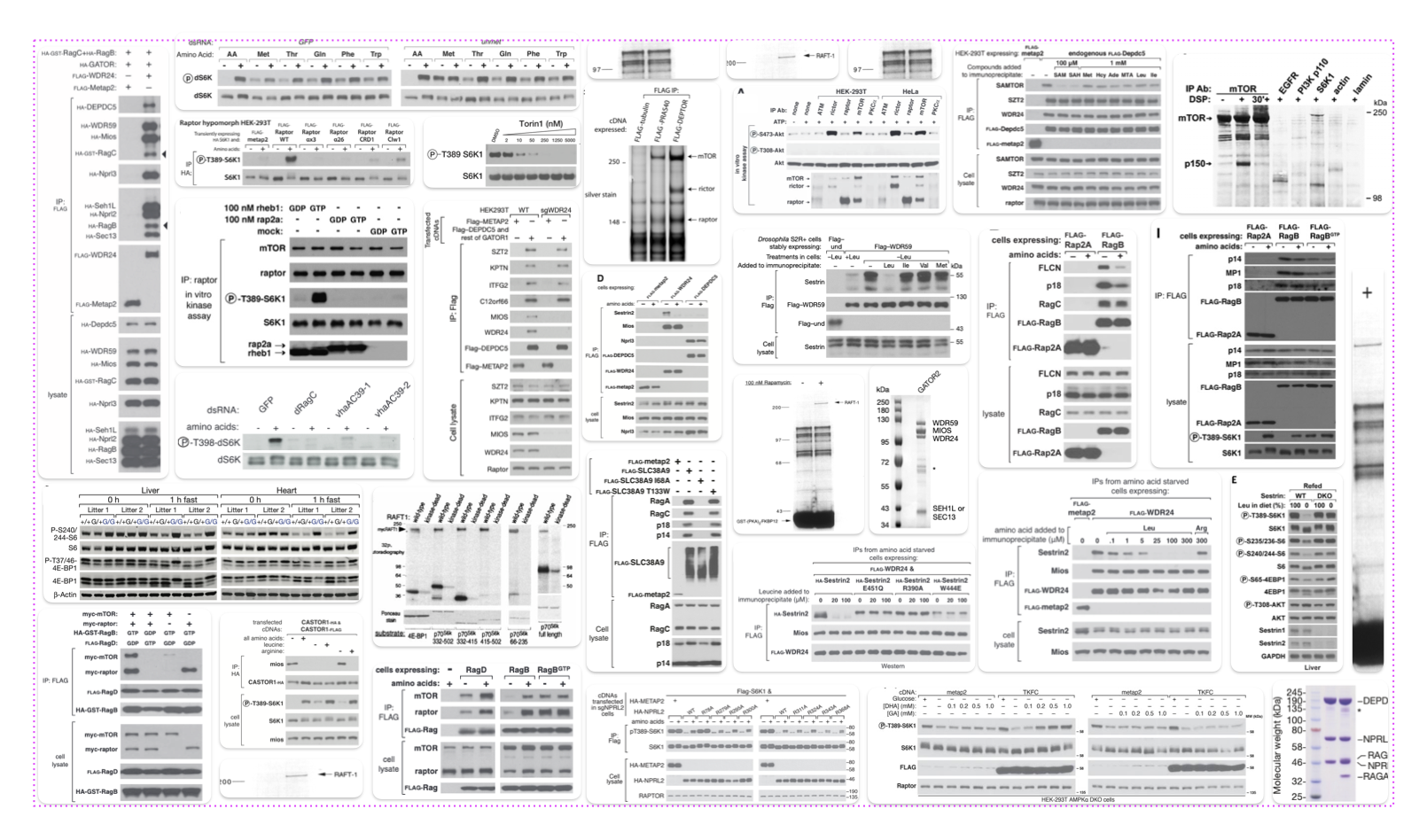Our projects


My lab has a long-standing interest in the regulation of growth and metabolism. This interest stems from our early work on the pathway anchored by mTOR protein kinase, which we now appreciate is a major regulator of growth and anabolism (mass accumulation) in eukaryotes and responds to diverse stimuli, including nutrients. Our lab identified the mTOR-containing protein complexes, mTORC1 and mTORC2, and their biochemical and in vivo functions, as well as the complicated pathway upstream of mTORC1 that senses nutrients, including the Rag GTPases, GATOR complexes, and sensors for leucine and arginine.
Because our work revealed that lysosomes play a key role in the activation of mTORC1 by nutrients, we began to study lysosomes as well as other organelles, like mitochondria and melanosomes. We developed widely used methods for the rapid isolation and profiling of these organelles (e.g., Lyso-IP and Mito-IP), and used them to deorphan the functions of disease-associated genes. Because mTORC1 senses nutrients, we also became interested in the metabolic pathways that cells to use incorporate biomass and generate energy, particularly in cancer. We are also active in technology development and previously developed methodologies for genome-scale RNAi and CRISPR screening.
These are a few of the projects available for trainees:
- Nutrient sensing by mTORC1 in vitro and in vivo. There are projects available to: identify the glucose sensor for the mTORC1 pathway; discover nutrient sensors in animals beyond mammals; understand how the known nutrient sensors (Sestrin for leucine, CASTOR for arginine, and SAMTOR for methionine) function in vivo in mice; and elucidate the biochemical function of key components of the nutrient sensing pathway, including GATOR2. These projects will use the tools of biochemistry and/or mouse mutants with specific mutations in nutrient-sensing pathway components.
- Lysosomes in normal physiology and disease. Our interest in mTORC1 led is to lysosomes as the activation of mTORC1 requires its translocation to the lysosomal surface. Using the Lyso-IP methodology and CRISPR screening technology there are projects available to: understand how common and rare neurodegenerative diseases impact lysosomal function; characterize and identify the contents of lysosomes in specialized cell types, like immune cells.
- Development of drug-like molecules for proteins of interest: In collaboration with medicinal chemists at IOCB and elsewhere, there are projects available to develop drug-like molecules that target mTOR pathway components as well lysosomal and mitochondrial proteins.

